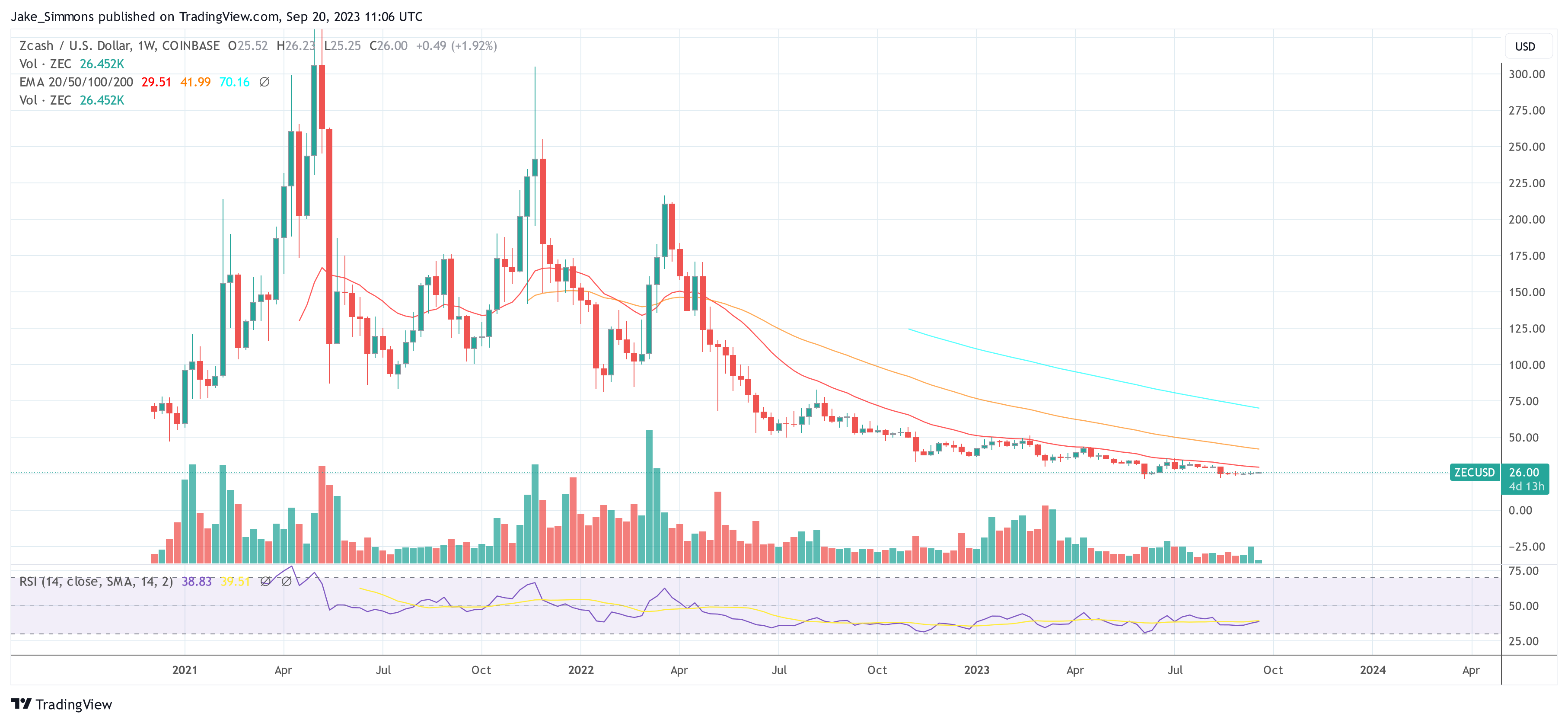In a turn of events that has sounded alarms in the crypto community, Coinbase warned that it has observed a single mining pool, ViaBTC, controlling 53.8% of the Zcash network hash rate. The cryptocurrency exchange promptly took precautionary actions to mitigate the risks associated with a 51% attack, a situation that arises when a single entity controls over half of the computational power on a blockchain network.
Coinbase’s Mitigation Measures
Upon detecting this significant centralization in the Zcash network, Coinbase promptly increased the Zcash confirmation requirement to 110 block confirmations, elongating deposit times from an average 40 minutes to roughly 2.5 hours.
This move is a bid to counter the double-spending vulnerabilities that arise when one entity controls over half of a proof-of-work blockchain’s computational power. Further, to shield its trading community from potential market upheavals that could ensue, Coinbase shifted its Zcash trading to a “limit-only” mode, thereby temporarily suspending market bids.
Coinbase’s statement reads: “We shared our concerns around the risks of mining centralization and provided recommendations for various options that either party could implement to reduce the risk of a 51% attack.” The exchange has initiated discussions with ECC and ViaBTC to seek a broader dispersion of mining power.
ECC’s Counter Response
Today, the Electric Coin Company (ECC), the development force behind Zcash, publicly responded to Coinbase’s protective measures. In a Twitter thread, ECC said, “ECC is aware of this issue, and we’ve had conversations with Coinbase, ViaBTC, Zcash’s security lead, and Zcash Community Grants. IMPORTANT: Zcash is a decentralized, open-source network with no ‘lead developer,’ no ‘issuer,’ and no org that controls it.”
An intriguing revelation from ECC’s statements was the acknowledgment of the inherent “lack of finality” that plagues proof-of-work blockchains, a challenge that Zcash is not immune to. In response, ECC is advocating for their “Trailing Finality Layer” (TFL) proposal, which is designed to provide finality for Zcash.
Shifting away from the traditional proof-of-work consensus, ECC divulged its research endeavors to transition Zcash to a proof-of-stake mechanism. With Nathan Wilcox spearheading these efforts, ECC is exploring the feasibility and performance of the TFL hybrid-PoW-PoS approach. This strategy could potentially introduce finality to the Zcash network, serving as an intermediary solution before a full transition to proof of stake.
“Moving Zcash to proof of stake is one of four key focus areas for ECC, and Nathan Wilcox is dedicated full-time to PoS R&D,” the tweet stated, adding “if the community chooses to activate the TFL hybrid-PoW-PoS approach, that would enable finality on the Zcash network sooner than an all-in-one shift to proof of stake. The next step in our PoS R&D is to build a prototype of TFL to see how it performs.”
The Implications And Path Forward
Although ViaBTC’s control raises the specter of a 51% attack, experts note that a mining pool is different from a single malicious miner. ViaBTC is composed of numerous individual miners who could quickly disperse to other pools if any malign activities were detected.
Nevertheless, the situation has reignited debates about the vulnerabilities tied to PoW blockchains and is driving ongoing conversations between major stakeholders about transitioning to PoS systems.
Coinbase has affirmed its commitment to closely monitor developments and adjust its risk mitigations as needed. Meanwhile, ECC is forging ahead with its TFL proposal and PoS transition plans.
At press time, Zcash traded at $26.00.

Source: https://bitcoinist.com/zcash-ecc-reacts-to-coinbases-double-spend-warning/
